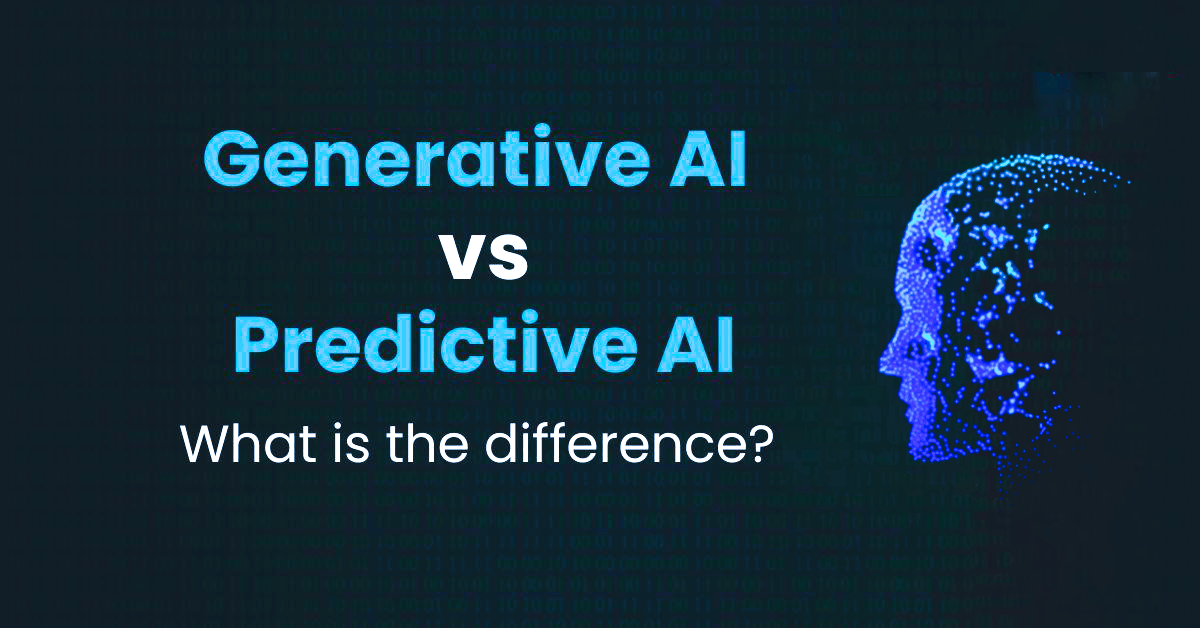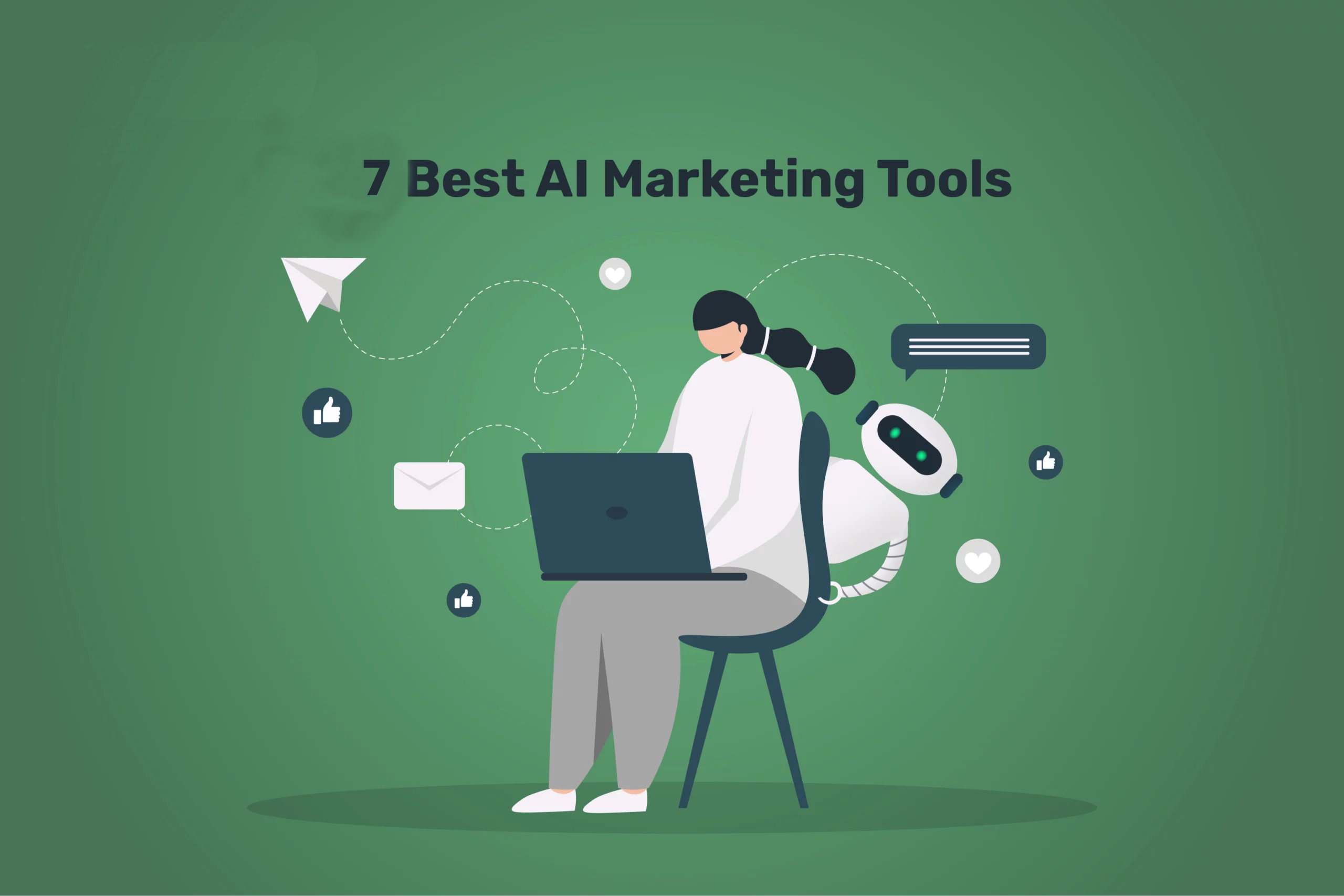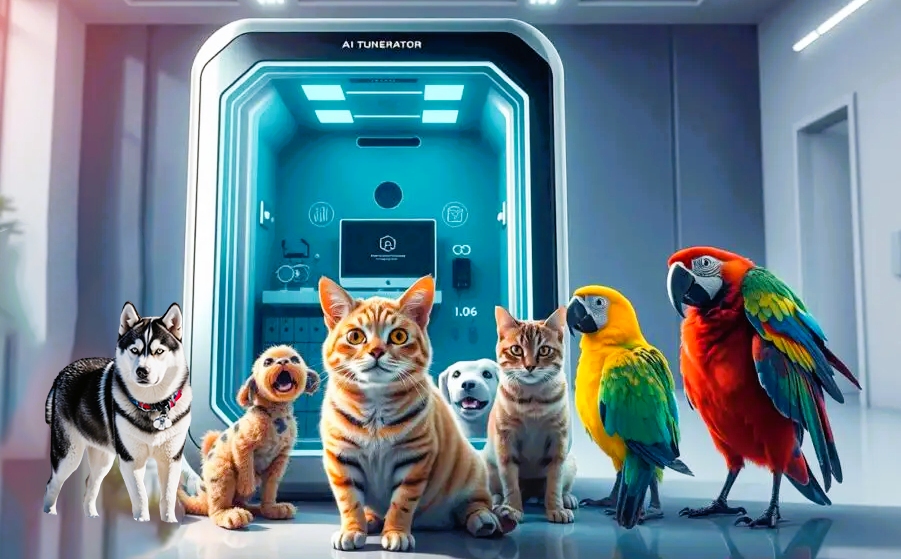Artificial Intelligence (AI) is transforming various industries by making tasks faster, more innovative, and more efficient. Two common types of AI that play a significant role in this revolution are generative AI vs predictive AI. While they may seem similar, they serve different purposes and use cases.
Generative AI focuses on creating new content, such as generating images, text, or videos, whereas predictive AI analyzes existing data to forecast outcomes or trends. Understanding the differences between these two types of AI is crucial to leveraging their strengths in the right situations. This blog post will help you know what generative and predictive AI are, how they differ, and where each can be applied most effectively.
What is Generative AI?
Generative AI is artificial intelligence that creates new content rather than analyzing or processing existing data. This type of AI learns patterns from data and uses this knowledge to produce original outputs, such as images, text, or even music.
For example, tools like OpenAI’s GPT-4 (which generates text) or DALL-E (which generates images) are based on generative AI. These models can create articles, realistic images, or even art pieces based on the information they have been trained on.
The critical feature of generative AI is that it doesn’t just mimic what it has seen; it generates new, unique content. Whether developing new product designs, crafting a story, or creating music, generative AI is widely used in content creation, entertainment, and design industries.
What is Predictive AI?
Predictive AI, on the other hand, is focused on analyzing existing data to make informed predictions about future events or outcomes. This AI doesn’t generate new content but processes past data to predict future trends.
A simple example of predictive AI is recommendation systems, such as those used by Netflix or YouTube. These systems analyze what you have watched before and predict what you want to watch next. Similarly, predictive AI is used in weather forecasting, where past weather data is analyzed to forecast future conditions.
Predictive AI looks for patterns in large datasets and applies them to make predictions, whether estimating future sales, forecasting stock prices, or recommending the following best action in healthcare or marketing.
Critical Differences Between Generative AI and Predictive AI
Though generative and predictive AI are powerful, they serve different purposes and functions. Let’s explore the key differences:
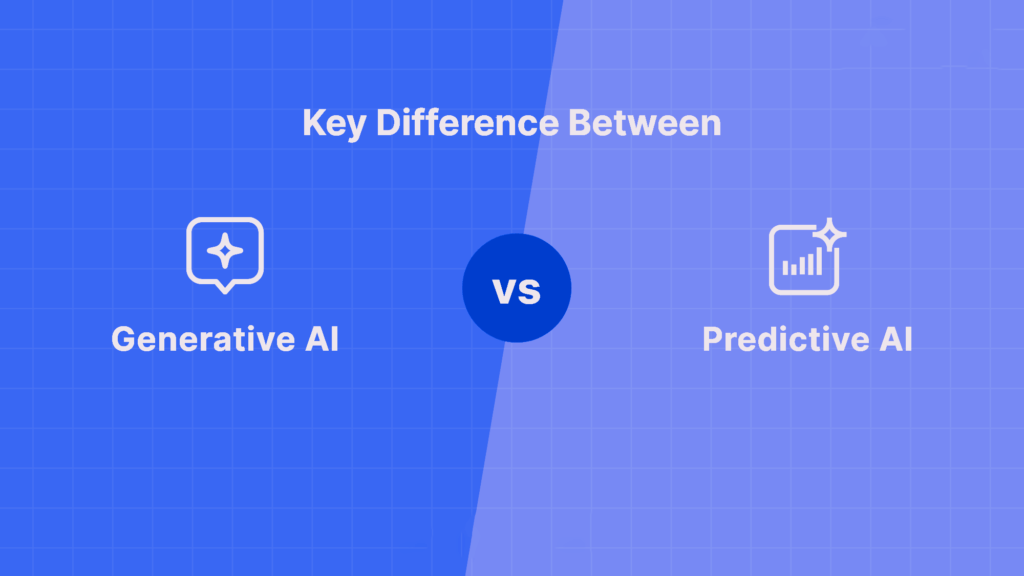
Purpose:
Generative AI focuses on creating new and unique content, while predictive AI forecasts future trends or outcomes by analyzing existing data.
Data Usage:
Generative AI learns patterns from a dataset and generates original outputs. For instance, it can create a new image that didn’t exist before. Predictive AI, on the other hand, relies heavily on historical data to make predictions or suggestions for the future.
Outcome:
The outcome of generative AI is creative content, such as new images, designs, or articles. The result of predictive AI is a prediction or forecast, such as predicting customer behavior or market trends.
These fundamental differences highlight how both AI models can be applied to different challenges, depending on the user’s needs.
Use Cases for Generative AI
Generative AI is increasingly being adopted across a variety of industries. Let’s look at some of the critical applications:
Content Creation:
Writers and marketers use generative AI to create articles, product descriptions, or marketing copy. AI tools like GPT-4 help businesses generate high-quality content quickly.
Art and Design:
Artists and designers use AI tools like DALL-E or Stable Diffusion to create new visual artwork, logos, or product designs. These AI models can help create unique designs that may inspire or directly contribute to creative projects.
Entertainment:
Generative AI is used to produce music, generate video game environments, or even write movie scripts. Its ability to create realistic and imaginative content opens new forms of creativity.
The ability of generative AI to create fresh content makes it valuable in industries where originality and creativity are essential.
Use Cases for Predictive AI
Predictive AI, with its ability to analyze and forecast, is widely used in industries that rely on data-driven decision-making. Here are some examples:
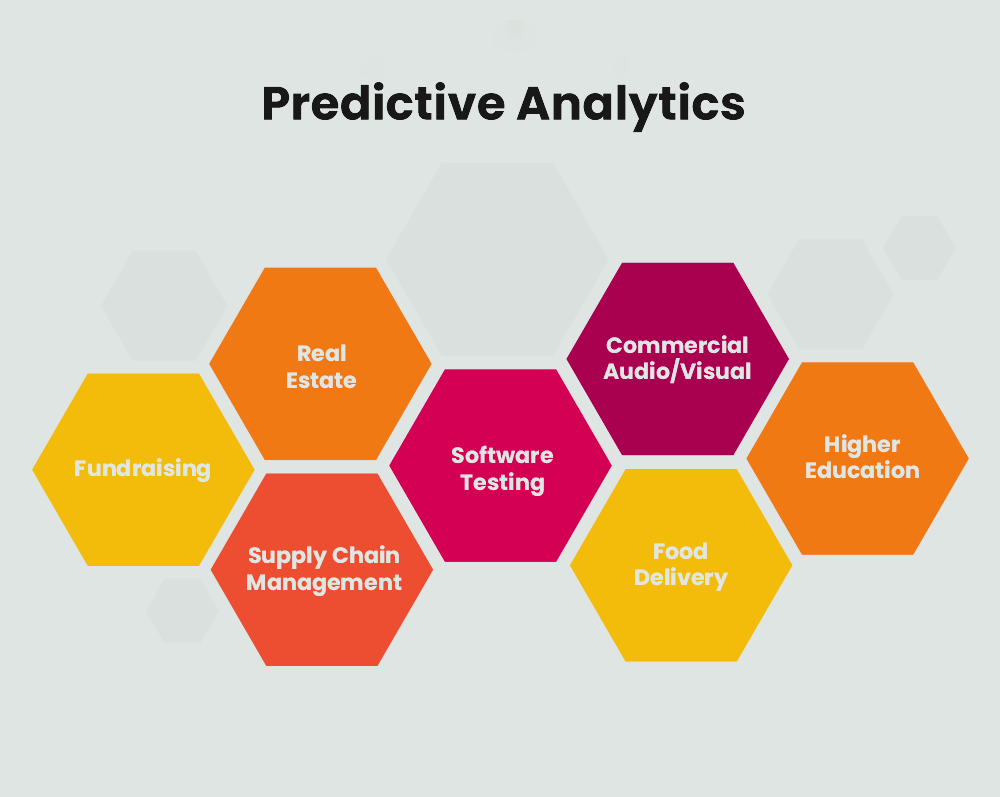
1. Finance:
Predictive AI is used in stock market analysis and financial forecasting. It helps traders and analysts predict market trends and make informed decisions based on data-driven insights.
2. Healthcare:
In healthcare, predictive AI can analyze patient data and medical records to forecast disease outbreaks, predict patient outcomes, or recommend personalized treatments.
3. Marketing and E-commerce:
Companies use predictive AI to understand customer behavior and recommend products. Predictive algorithms analyze purchasing patterns to suggest items consumers are likely to buy, helping businesses boost sales and improve customer satisfaction.
Predictive AI’s ability to provide actionable insights makes it indispensable in fields that depend on accurate forecasting and trend analysis.
Challenges and Limitations
While both generative and predictive AI offer impressive capabilities, they also face challenges:
1. Data Quality:
Both generative and predictive AI depend heavily on high-quality data. Only accurate or accurate data can lead to good results. For example, if generative AI is trained on biased data, it may produce biased content, and if predictive AI uses poor data, its forecasts will be unreliable.
2. Ethical Considerations:
Ethical challenges surround AI, such as bias, transparency, and the responsible use of AI-generated content. For example, generative AI might create deep fake images or videos, which can be misused.
Both types of AI need continuous monitoring to ensure they produce fair, unbiased, and ethically sound results.
Future Trends in AI
The future of AI is promising, with exciting developments in both generative and predictive AI:

Generative AI:
As generative AI advances, we can expect more sophisticated creative tools to generate increasingly realistic content in art, music, or even virtual environments.
Predictive AI:
In predictive AI, advancements in machine learning algorithms will lead to more accurate forecasts, potentially revolutionizing fields like medicine, finance, and even climate science.
The integration of these technologies will likely drive innovation across multiple industries, making AI a more significant part of our daily lives.
Making the Right Choice: Generative AI vs Predictive AI
Choosing between generative and predictive AI depends on your goals and the type of data you have:
- If your goal is to create new content, generative AI is the way to go.
- Predictive AI is the better choice if you aim to make informed predictions based on data.
Factors like the type of problem you’re trying to solve, the available data, and the desired outcome will guide your decision.
Conclusion
In summary, generative AI and predictive AI are both powerful tools but serve different purposes. Generative AI excels in creative tasks and producing new content, while predictive AI is focused on analyzing existing data to forecast outcomes.
Understanding the differences between these two AI technologies is essential for making informed decisions about using them. By knowing when and where to apply each, businesses and individuals can maximize the potential of AI in their respective fields.
Explore these technologies and consider how they can help you in your work, whether you’re looking to generate creative content or make data-driven predictions.

